STEM in School: Learning in Designed Environments
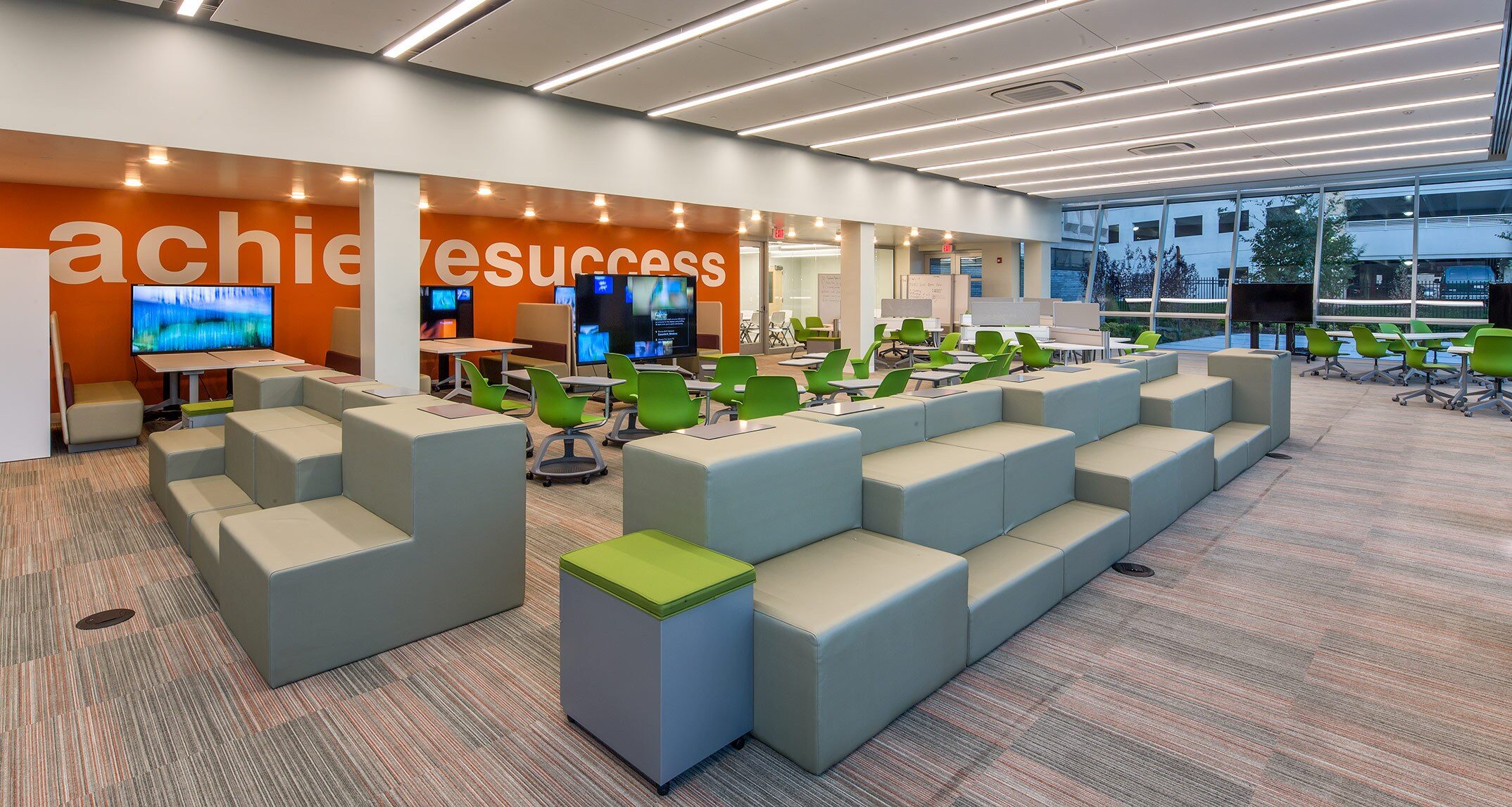
Technology Enhanced Active Learning (TEAL) Center at Essex County Newark Tech
Thanks to the stunning work of Carol Dweck1, we know that students' mindsets play a key role in their math and science achievement. The earlier we can connect students to the mindset that their abilities as researchers and scientists can be developed, the higher they achieve.
Students who believe that math and science ability is simply a fixed trait are at a significant disadvantage compared to students who believe that their abilities can be developed. These mindsets can play an important role in the relative underachievement of women and minorities in math and science. We argue here that the classroom (the built environment) is an integral part of sparking an attitudinal and mindset shift in students.
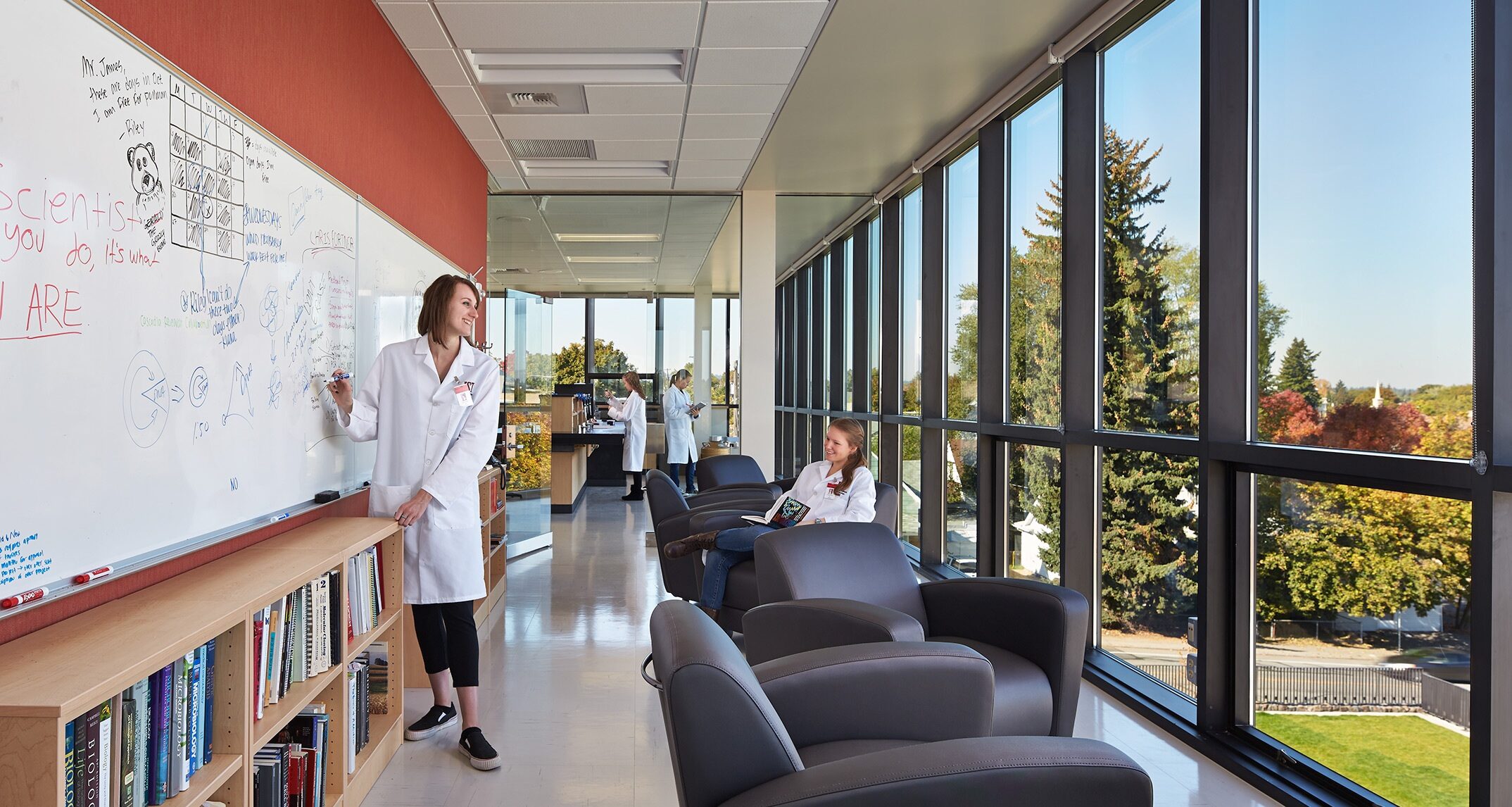
North Central High School Institute of Science and Technology, Spokane - NAC
What's the role of the classroom?
Take a moment and reflect – what is your classroom used for? What's its current purpose? Maybe your classroom is a vessel for holding knowledge? Or maybe you use it an active teaching tool?
We find that when purposefully designed the classroom has the power to spark a positive attitudinal and mindset shift. People read their physical surroundings much like they do faces. Our environment gives us clues about what we can and cannot do in that space, about the norms and what's accepted and encouraged or even discouraged. When we walk into a classroom it's immediately sending us nonverbal messages about how we're supposed to behave. I love giving the example of a lecture hall: with the chairs lined up in rows, bolted to the ground, facing in one direction – usually a projection screen and/or a lectern and there's one person standing at the front. Does this space promote collaboration? Teamwork? Investigative learning? Any of the hallmarks of STEM? We know that the psychical classroom and school can be used to scaffold not only the learning process but a child's sense of identity as a scientist, mathematician or engineer.
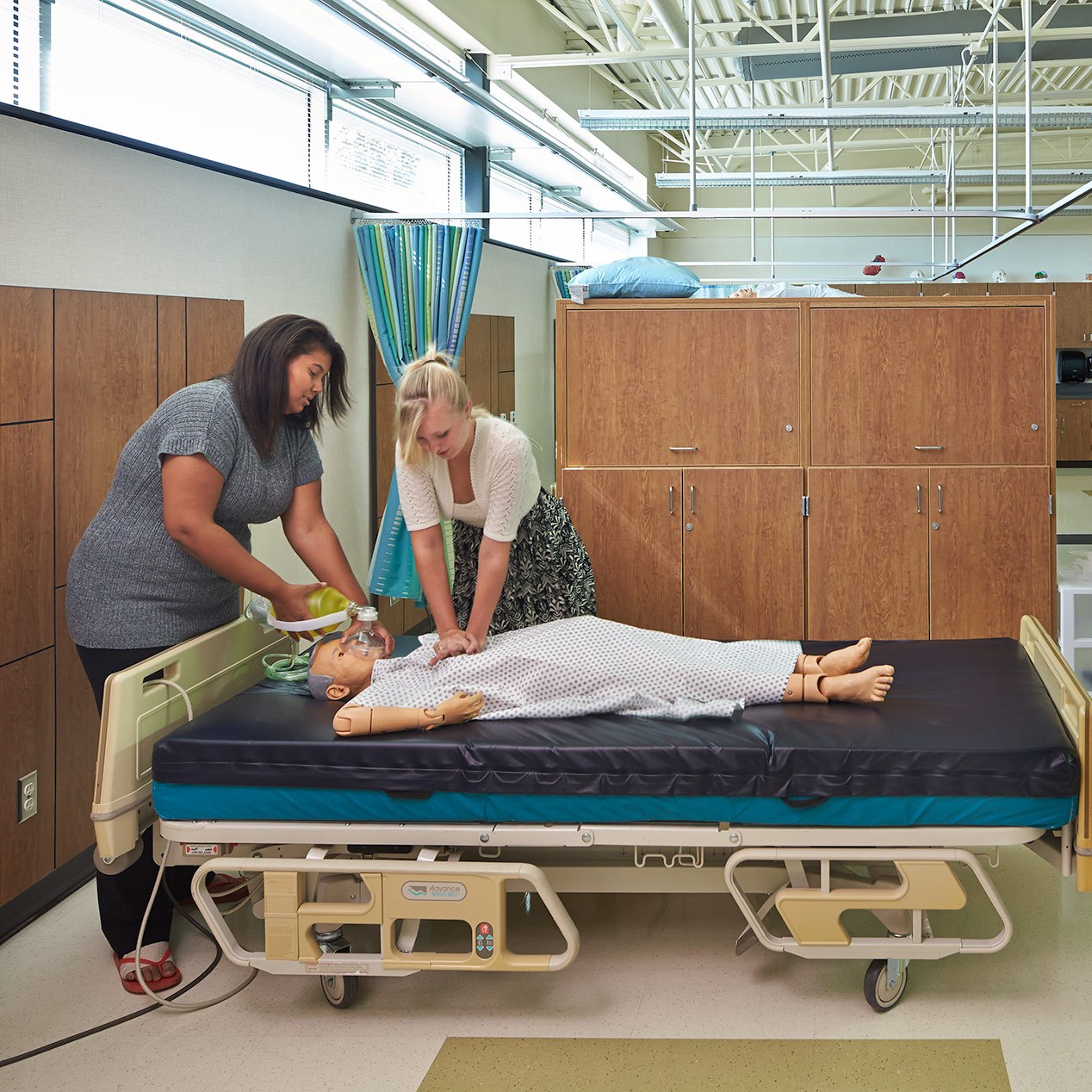
Columbia Basin Technical Skills Center, Moses Lake - NAC
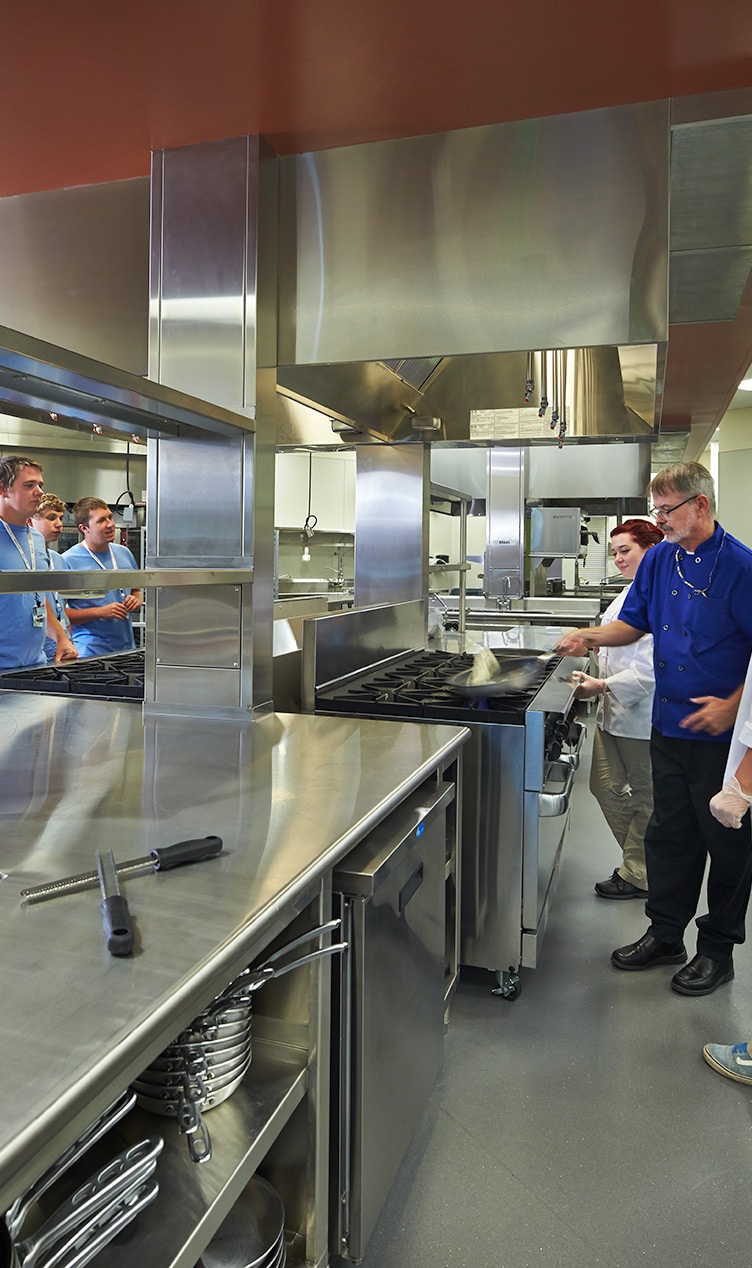
What can we do?
We can take a page from industry and environments designed for interaction with scientific phenomena (e.g., museums, aquariums, etc.) where emotional and interactive sensory experiences are design priorities.
These environments are rich in real-world phenomena that promote and support a variety of emotional responses and processing modes. This increases the likelihood of connecting with a larger number of people, supporting their identities as researchers, developers and scholars. These are places where people can independently or collaboratively pursue and develop science interests, or reflect on their experience through sense-making conversations. In other words – they are engaging! These environments draw people in, inviting them to explore, investigate, and test. They also physically draw connections across disciplines – because the greatest discovery yet to be made will not occur in a silo.
By contrast, the built environment that characterizes most of today's schools and classrooms encourage isolation.
So let's help our students build that sense of identity. Let's help them see themselves as autonomous scholars. Let's prepare them for the industries we want them to step into once they leave the halls of school. We can do this by creating classrooms that scaffold and catalyze student learning and the creation of knowledge. The right STEM classroom can punctuate the equilibrium of the class; by changing the space, you can accelerate the transformation of students into scientists, mathematicians, and researchers.
With some input from some of our star clients, here are our suggestions for design priorities:
- Make it colorful, spark their interest
- Provide individual workstations
- Model the space after industry's
- Invest in adaptable technology
- Build your own tools
- Ask for gifts
- Treat students like scientists inside and outside of the classroom
Change needs to happen. The physical makeup of the classroom and school is important, it does contribute to the degree of learning, and current classroom models are inhibiting the kind of teaching/learning that needs to occur in order to prepare our students in STEM for the 21st century.
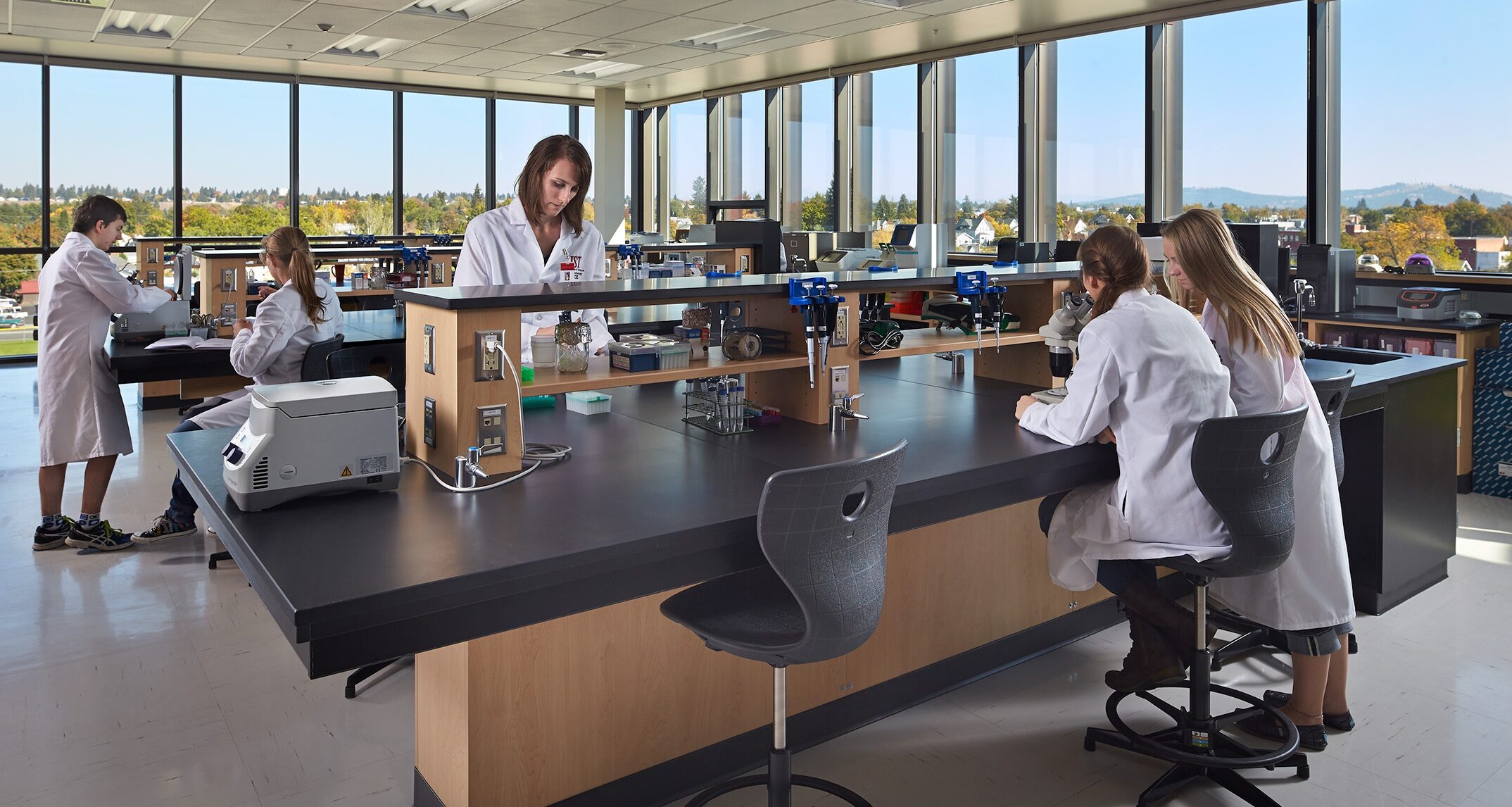
North Central High School Institute of Science and Technology, Spokane - NAC
1 Carol S. Dweck, Ph.D., is one of the world's leading researchers in the field of motivation and is the Lewis and Virginia Eaton Professor of Psychology at Stanford University. Her research has focused on why people succeed and how to foster success. She is credited with discovering mindset – a simple idea born out of decades of research on achievement and success. In a fixed mindset, people believe their basic qualities, like their intelligence or talent, are simply fixed traits. They spend their time documenting their intelligence or talent instead of developing them. They also believe that talent alone creates success—without effort. They're wrong. In a growth mindset, people believe that their most basic abilities can be developed through dedication and hard work—brains and talent are just the starting point. This view creates a love of learning and a resilience that is essential for great accomplishment.
